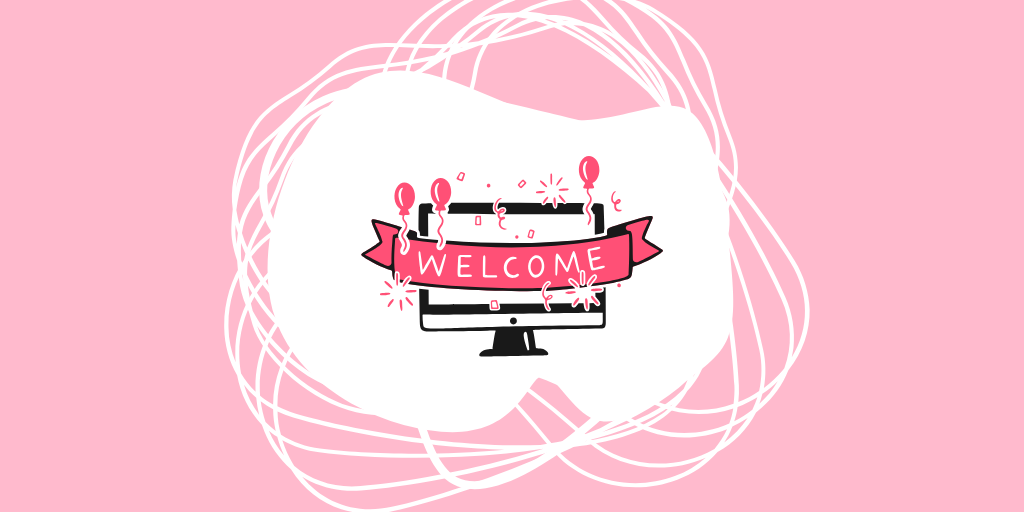How to Properly Welcome a New Team Member Remotely

As your company grows, you quickly realize that new hires play a pivotal role in your success.
Making the right hiring decisions is game-changing because you want to maintain a productive, cohesive team and strive for continuous performance improvement.
Once the offer is accepted, your work isn't finished! The next step is ensuring that the new team member feels integrated and understands how they're expected to contribute.
Keep reading to discover techniques on how to welcome a new team member and learn about the milestones that indicate you've made a successful hire.
Main Steps to Create a Great Welcoming Experience
Welcoming a new team member is more than a simple introduction: it's the first step in building trust and clear expectations.
This is especially true for remote teams, where establishing a clear, engaging process is key to making newcomers feel part of the team from the very start.
According to Strider's expertise in helping create high-performing tech teams around the globe, we break the welcome process into three clear phases: preboarding, onboarding, and follow-ups.
Preboarding
Before the new hire's first day, preboarding lays the foundation for a successful experience.
This phase is all about keeping the newcomer excited and informed.
For remote teams, preboarding can include providing access to the team's documentation, setting up their work email and calendar, and giving clear instructions on what to expect during the early days.
This approach helps reduce first-day jitters and builds anticipation for what's ahead.
Onboarding
A structured onboarding process is crucial for introducing the company’s services, internal teams, and overall value to the market.
During onboarding, it's important to clearly explain the company's mission, values, and culture.
This phase connects each internal team with the main services provided, giving the new hire a solid understanding of how the organization operates and where they fit in.
Follow-Ups
Regular check-ins in the first days and weeks ensure the new hire is settling in well. Follow-ups typically involve sessions with leadership and HR representatives.
These sessions address any technical questions with the manager, while also confirming that the overall welcoming experience meets the new hire’s needs.
Regular follow-ups are essential for early identification and resolution of any issues, making sure the new team member feels supported every step of the way.
Creating a Collaborative Welcome
Integrating your current team into the welcome process plays a key role in making new hires feel comfortable and valued right from the start.
Since these employees will work closely with the newcomer, they must take part in the introduction sessions.
When the team collectively expresses enthusiasm, it not only eases the new hire’s transition but also reinforces clear expectations for ongoing collaboration.
Moreover, involving team members in the onboarding process offers a unique chance to review and refine internal procedures. This collaborative approach helps the new hire acclimate quickly while also promoting a culture of continuous improvement.
As a result, it leads the team to a more efficient and well-organized operation overall.
Implementing Buddy and Mentoring Programs
A strong connection between the new hire and their team is crucial for fostering integration and creating a comfortable space for questions and collaboration.
One effective way of strengthening this bond is by implementing buddy or mentoring programs. These programs allow new hires to connect with experienced team members who can guide their early steps within the company.
In an ideal scenario, a mentor should be someone who can provide technical feedback on the newcomer’s first deliverables, while also embodying the team’s culture and values.
This mentor should be respected by peers and act as a positive influence on the newcomer.
In contrast, a buddy might focus more on practical support rather than technical guidance, helping the new hire through the social and organizational aspects of their new role.
Common Expectations
Buddying or mentoring programs typically include:
- Meetings with peers from various teams to build a broad support network;
- An overview of the team’s deliverables, even if not directly assigned;
- Insights into the team’s goals and KPIs;
- Access to collaborative tools for task management and communication;
- Participation in common team rituals like daily meetings and social events;
This approach supports the new hire’s technical and cultural integration while also encouraging continuous improvement within the team.
Establishing Clear Milestones
Joining a new team can feel overwhelming, especially when so much information—people, tasks, tools, goals, and processes—comes your way at once.
To prevent overload, it's key for managers to set achievable milestones based on the time that has passed since the new hire joined.
This phased approach gives a senior developer, especially one working remotely, the time to acclimate, understand their role, and get comfortable with how the company operates.
Here’s a suggested breakdown:
30 Days
At this early stage, the focus is on laying a solid foundation. Milestones might include:
- Initial orientation and training: complete all onboarding sessions covering company culture, policies, and technical fundamentals.
Check-in by: HR and the immediate manager.
- Tool and environment setup: successfully configure the development environment, access all necessary tools, and set up a productive remote workspace.
Check-in by: IT support and the immediate manager.
- Familiarizing with the codebase: begin exploring the codebase, project architecture, and workflows to understand how things operate.
Check-in by: the assigned mentor or team lead.
- Engaging with the team: actively participate in virtual meetings and communication channels to start building connections.
Check-in by: the immediate manager.
- Setting short-term goals: collaborate with a manager to outline initial objectives and expectations for the coming weeks.
Check-in by: the direct manager.
60 Days
With the basics in place, the next phase emphasizes deeper integration and growing responsibilities.
- Active contribution: start contributing to code reviews and take on feature development tasks, even on a small scale.
Check-in by: team lead or mentor.
- Enhanced collaboration: build stronger relationships with team members, engage in cross-team projects, and fully participate in regular team rituals.
Check-in by: the immediate manager.
- Feedback and process review: share insights about the onboarding experience and workflow to help refine internal processes.
Check-in by: An HR representative.
- Deepening technical knowledge: demonstrate a deeper understanding of the codebase by suggesting improvements and adjustments.
Check-in by: the team lead.
- Taking on more responsibility: begin tackling more complex tasks and challenges within ongoing projects.
Check-in by: the direct manager.
90 Days
By the three-month mark, the new hire should be well integrated and ready for long-term success. Key milestones may include:
- Project ownership: take charge of a major feature or a significant component of a project, showcasing technical leadership and initiative.
Check-in by: the direct manager.
- Cross-functional engagement: collaborate with other teams to understand broader business objectives and how individual efforts contribute to overall success.
Check-in by: the mentor or team lead.
- Process improvement initiatives: identify areas for workflow enhancements and contribute to refining internal processes.
Check-in by: the manager and mentor.
- Deepening team culture participation: actively engage in team-building activities and maintain a role in promoting a positive, collaborative culture.
Check-in by: HR and the immediate manager.
- Performance review and future planning: undergo a formal performance evaluation to assess achievements, discuss challenges, and set long-term professional development goals.
Check-in by: the direct manager and HR representative.
Continuous Growth and Development
After the first 90 days, managers have a clearer picture of a new hire’s strengths and areas for growth.
By this point, the new hire should also understand the company’s career plan, setting the stage for long-term collaboration.
Now, the conversation shifts from immediate integration to ongoing development, with discussions focusing on what’s expected for future progress, the dependencies (such as achieving individual goals), and what a promotion might entail in terms of expanded responsibilities and salary adjustments.
The approach to career development can vary depending on the hiring model:
For Contractors
- Development is typically project-based, with clear performance milestones tied to each assignment.
- Feedback is gathered after key deliverables, helping contractors refine their skills and build a strong reputation.
- The conversation could lead to a promotion, depending on the initial working agreement. The most important is that the manager is clear on what's expected from the contractor, the conditions for contract renewals, and/or opportunities for bonus rates.
For Temporary Employees
- Regular check-ins focus on skill enhancement and meeting project-specific goals within a limited timeframe.
- Career development discussions center around recognizing achievements, refining workflows, and exploring the possibility of contract extensions.
- Even as temporary staff, clear feedback, and milestone achievements can open doors to further opportunities within the organization.
For In-House Hires
- A formal career path is often established early, with periodic performance reviews that detail both achievements and areas for improvement.
- Discussions include setting future objectives, understanding team dependencies, and defining what a promotion looks like in terms of additional responsibilities and salary increases.
- The focus is on long-term growth, with structured mentorship and training programs to support continued professional development.
Final Thoughts on How to Welcome a New Team Member
In summary, a warm and structured welcome goes a long way in ensuring new hires feel integrated and ready to contribute.
By involving the entire team, you not only ease the newcomer into the culture but also refine your internal processes.
Building strong bonds through buddy and mentoring programs and setting clear milestones for the first 30, 60, and 90 days provides a roadmap that supports growth from day one, regardless of the chosen hiring model.
Keep building your global, high-performing team. Our next suggested read is Why Candidates Decline Your Job Offer: learn what causes top developers to overlook your job offer and how to make your company stand out in your niche.
